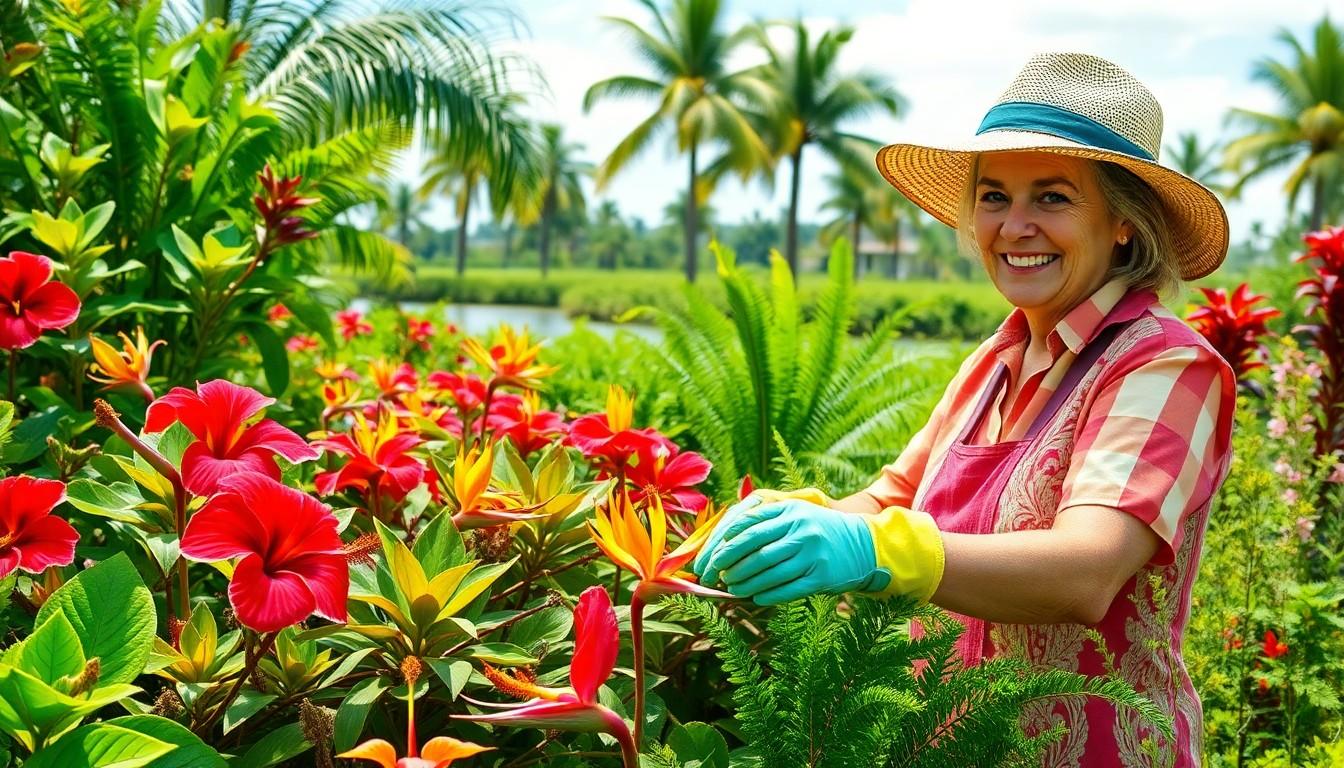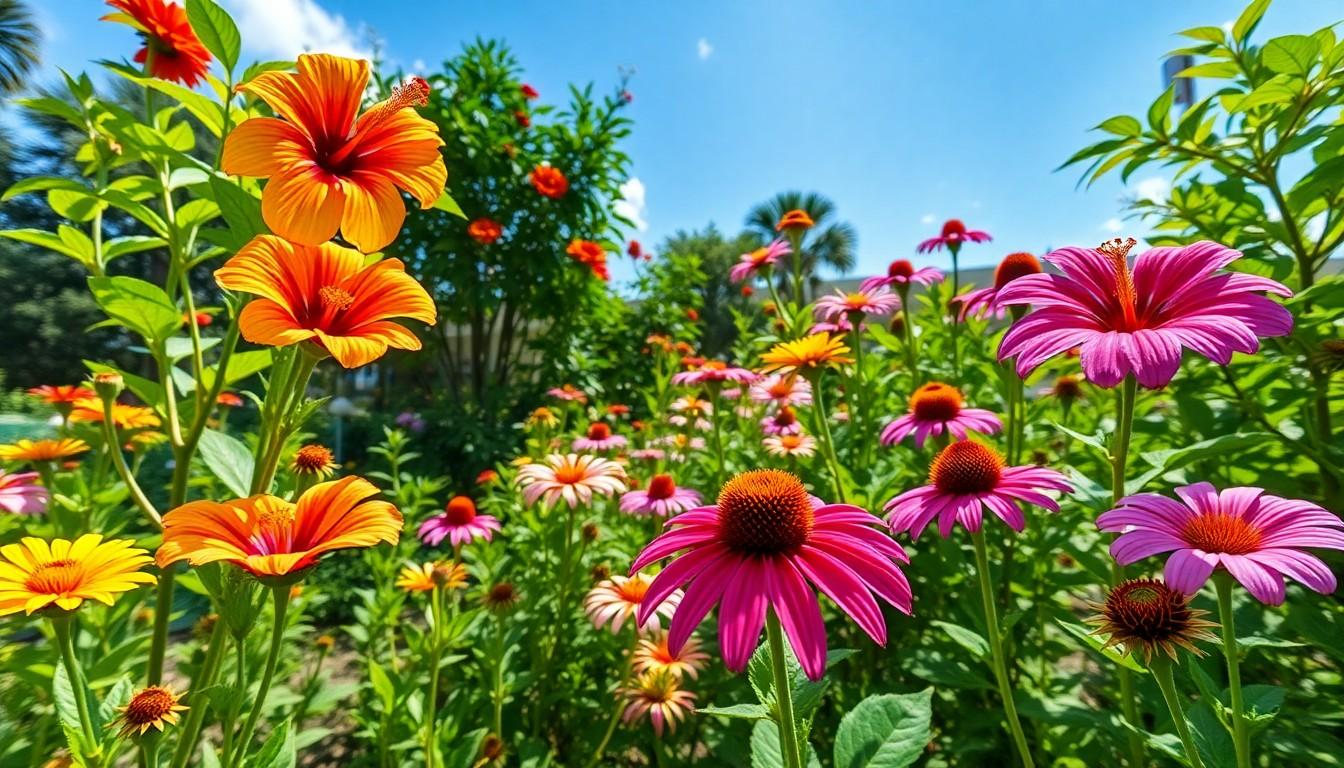The Best Fluffy Pancakes recipe you will fall in love with. Full of tips and tricks to help you make the best pancakes.

Best Outdoor Plants for Florida: Top Picks for a Lush, Tropical Garden
Florida’s sun-soaked landscapes are a plant lover’s paradise, but choosing the right greenery can feel like a high-stakes game of roulette. With humidity levels that could make a sauna jealous and unpredictable rain patterns, not every plant can handle the heat. If you want to avoid the heartache of watching your botanical dreams wither away faster than a snowman in July, you need to know which outdoor plants thrive in the Sunshine State.
Overview of Outdoor Plants in Florida
Selecting outdoor plants requires consideration of Florida’s climate, which includes high humidity and varying rainfall. Different types of plants thrive under these conditions. Native plants often adapt better to local environments and can withstand the state’s unique weather patterns.
Tropical plants, like hibiscus and bird of paradise, display vibrant colors and grow well in Florida’s heat. Perennials, such as daylilies and coneflowers, offer long-lasting blooms and tolerate the region’s summers. Succulents, including aloe vera and agave, provide drought-resistant options, perfect for sandy soils.
Foliage plants like ferns and palms create lush backgrounds in gardens, adding depth and texture. Citrus trees are popular choices, as they not only bear fruit but also thrive in Florida’s temperature zones. These diverse selections ensure gardeners can find suitable outdoor plants regardless of their specific preferences or garden layouts.
Understanding the importance of proper placement and care helps maximize the potential of these plants. Sunlight exposure, soil type, and irrigation strategies significantly impact plant health. Research local conditions and select appropriate varieties for a robust outdoor space.
Emphasizing native species supports local ecosystems and promotes sustainable gardening practices. They typically require less maintenance and offer essential habitat for wildlife. Opt for a mix of flowering and foliage plants to create a balanced and dynamic landscape that flourishes year-round.
Factors to Consider When Choosing Plants

Selecting outdoor plants for Florida requires attention to several critical factors. These factors ensure optimal growth and resilience in the state’s unique environment.
Climate and Weather Conditions
Florida’s climate ranges from subtropical to tropical. High humidity and frequent rainfall create a growing environment that supports moisture-loving plants. Seasonal variations affect plant choices; tropical species thrive in warm months. Dry spells can lead to drought stress, so drought-resistant options also play a crucial role. Resilient plants withstand intense sun and heavy rains. Examples include hibiscus and coneflowers, which adapt well regardless of seasonal changes.
Soil Types and Their Impact
Soil composition significantly influences plant health in Florida. Sandy soil, prevalent in many areas, drains quickly, which can affect moisture retention. Some plants prefer well-drained soil, while others thrive in clay or loamy soils. Testing soil pH ensures compatibility with selected plants. Amendments like compost can enhance nutrient availability. Additionally, understanding drainage patterns aids in selecting plants that handle wet or dry conditions. Local native plants often adapt best to specific soil types, supporting regional ecosystems effectively.
Best Outdoor Plants for Florida
Florida’s unique climate offers an array of outdoor plants suited to its conditions.
Native Plants
Native plants excel in Florida due to their natural adaptation to local climates. Options like the flowering dogwood, saw palmetto, and Florida coontie provide essential support for local ecosystems. These plants require minimal maintenance and promote biodiversity by attracting native wildlife. They also thrive in sandy soils, resisting pests and diseases common to the region. Incorporating native species into gardens fosters a vibrant landscape and encourages sustainable gardening practices.
Drought-Tolerant Plants
Drought-tolerant plants perform exceptionally well in Florida’s dry spells. Varieties such as lantana, salvia, and purple coneflower withstand prolonged periods without water. These plants offer vibrant colors while conserving water, making them ideal for eco-friendly gardening. Even in sandy soils, their deep root systems help maximize moisture retention. Using such plants improves garden resilience against climate variability and reduces irrigation needs.
Flowering Plants
Flowering plants add bursts of color throughout the year. Hibiscus, butterfly bush, and plumbago create stunning displays in gardens while attracting pollinators. These plants thrive in full sun and are well-adapted to Florida’s diverse climate zones. Seasonal blooms ensure a vibrant landscape, enhancing the garden’s aesthetic appeal. Selecting overlapping bloom times can ensure continuous flowering, maintaining visual interest.
Foliage Plants
Foliage plants contribute texture and greenery, enriching outdoor spaces. Ferns, crotons, and palms thrive in Florida’s humidity, providing lush backgrounds for gardens. These plants require varying sunlight, so it’s vital to consider their specific light needs when selecting locations. They also play a significant role in creating shade, enhancing outdoor comfort. Incorporating a mix of foliage plants encourages a tropical feel and balances the colorful blooms.
Maintenance Tips for Florida Plants
Selecting plants for outdoor spaces in Florida requires specific maintenance strategies to ensure longevity and vitality. Understanding local climate conditions helps in creating a sustainable garden. High humidity and variable rainfall affect watering schedules, making it necessary to monitor soil moisture regularly.
Irrigation techniques that utilize drip systems or soaker hoses promote efficient water usage. Proper mulching retains moisture and reduces weed growth, creating an ideal environment for plant roots.
Fertilization plays a crucial role in plant health. Using slow-release fertilizers every few months boosts nutrient supply without overwhelming the plants. Consider organic options to support the ecosystem.
Pruning is essential for maintaining the shape and health of plants. Regularly trimming back overgrown branches encourages fresh growth in flowering species. Additionally, removing dead or diseased foliage prevents the spread of pests and disease.
Pest management requires vigilance. Regularly inspecting plants for signs of infestation allows for early intervention. Natural pest control methods, such as introducing beneficial insects, often minimize damage while reducing chemical usage.
Choosing native plants simplifies maintenance. These species are well-adapted to local soil and climate conditions, making them less prone to disease and pest issues. Comprehensive research on specific plants enhances a gardener’s understanding of unique needs.
Seasonal adjustments may also enhance plant performance. Protecting plants from cold snaps during winter ensures they thrive in varying temperatures. Providing shade for delicate plants during the hot summer months helps prevent stress and leaf scorch.
Investing time in understanding these maintenance tips fosters a lush and healthy garden, celebrating Florida’s diverse plant life.
Conclusion
Selecting the right outdoor plants for Florida can transform any garden into a vibrant oasis. With a diverse range of native and tropical species available, gardeners can create lush landscapes that thrive in the state’s unique climate. By prioritizing proper care and placement, it’s possible to cultivate a flourishing garden that not only enhances curb appeal but also supports local ecosystems. Embracing the beauty of Florida’s flora while implementing sustainable practices ensures a thriving outdoor space for years to come. This thoughtful approach to gardening celebrates the state’s rich biodiversity and offers a rewarding experience for every plant enthusiast.
